Extended Version
Plant Disease Calendar
This online version of our popular plant disease calendar provides you with even more detailed information than the physical product. With this extensive resource, you can easily identify and treat common plant diseases that affect your home garden, greenhouse, or indoor plants.
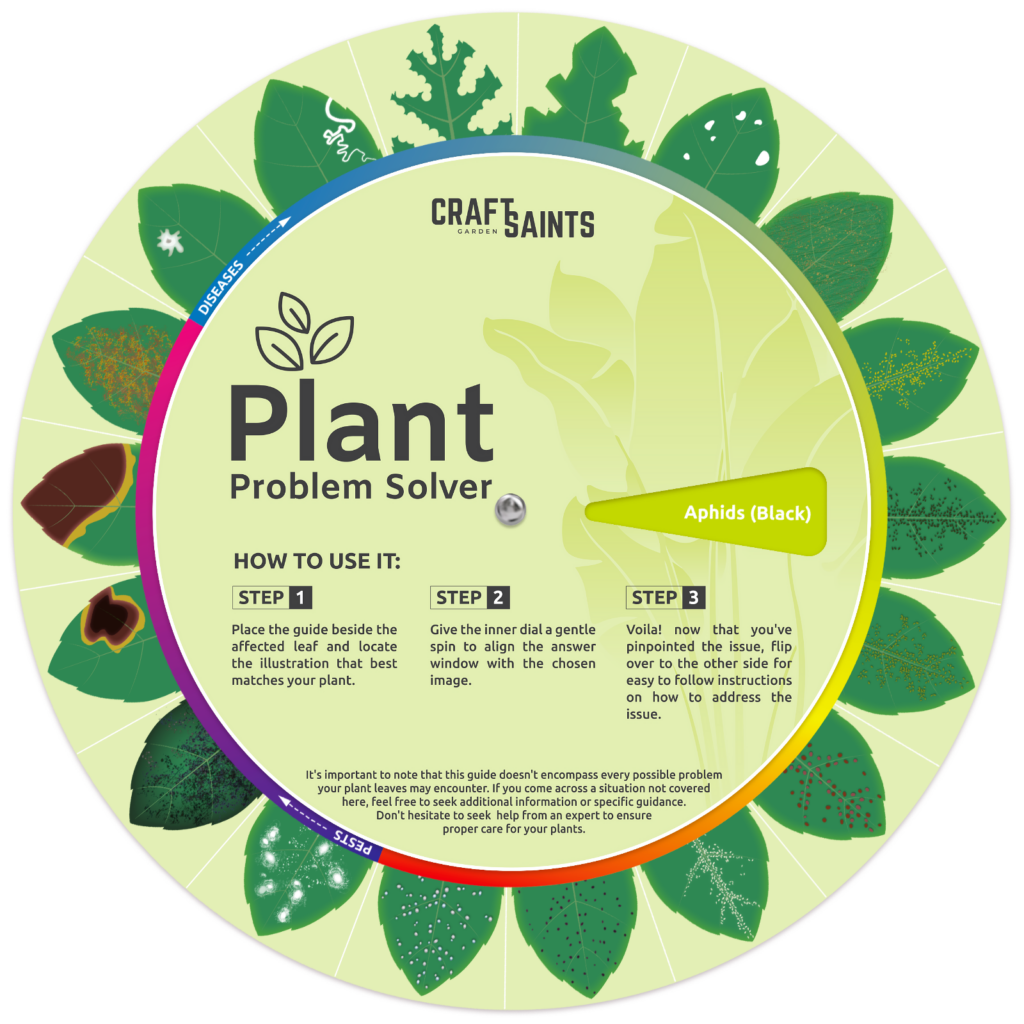
Sooty Mold

Sooty mold is a parasitic fungus that feeds on a sweet substance called honeydew, produced by sap-sucking insects like aphids, scale insects, and mealybugs. The honeydew is sticky and attracts other pests, such as ants, which can worsen the situation.
Causes:
Sap-sucking insects: These insects feed on the plant’s sap, leaving behind honeydew, which sooty mold thrives on.
High humidity: High humidity conditions favor the growth of sooty mold.
Poor air circulation: Poor air circulation around the plant can trap moisture and create an environment conducive to sooty mold growth.
Prevention:
Regularly inspect your plants for signs of sap-sucking insects.
Use insecticidal soap or neem oil to control sap-sucking insects.
Avoid overhead watering, which can splash honeydew onto other parts of the plant.
Promote good air circulation by pruning overcrowded foliage and positioning plants in well-ventilated areas.
Treatment:
Remove the affected leaves.
Clean the plant with a mixture of water and mild soap to remove honeydew deposits.
Apply a neem oil or insecticidal soap spray to kill the remaining insects and prevent further sooty mold growth.
Powdery Mildew
Powdery mildew is a fungal disease that causes a white, powdery coating on leaves, stems, and buds. It can cause leaves to yellow and drop prematurely, and it can also weaken the plant’s ability to fight off other diseases.
Causes:
High humidity
Poor air circulation
Stressed or weak plants
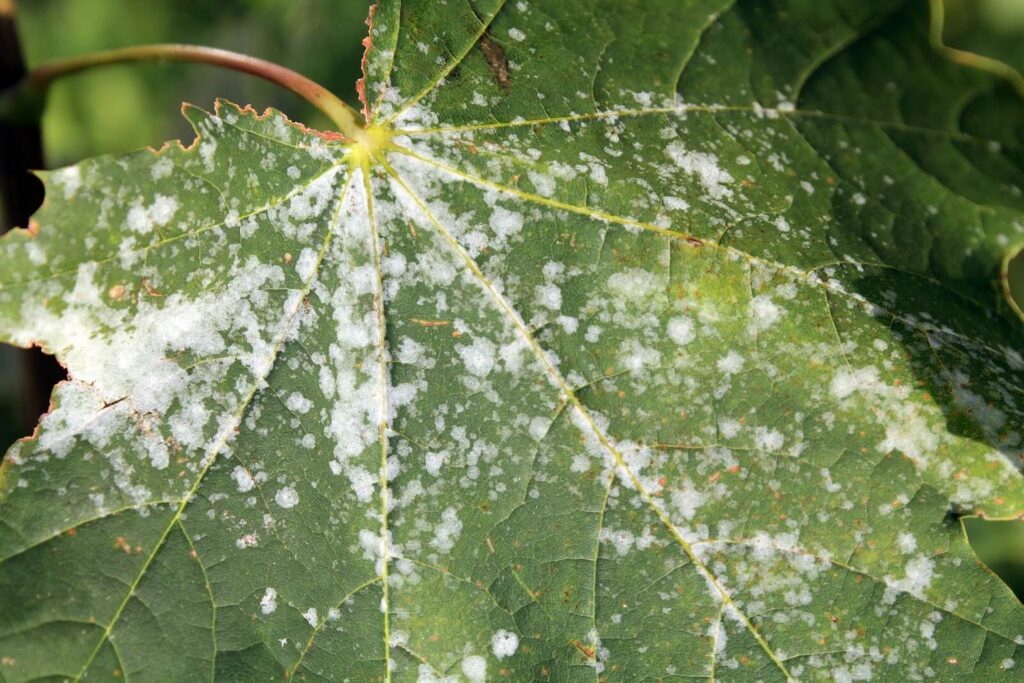
Prevention:
Provide good air circulation around your plants.
Avoid overhead watering, which can splash spores onto healthy leaves.
Grow powdery mildew-resistant varieties of plants whenever possible.
Mulch around your plants to retain moisture and suppress weeds, which can harbor powdery mildew spores.
Treatment:
Remove infected leaves to prevent the spread of the fungus.
Use a fungicide labeled for use against powdery mildew.
Spray the affected plants with a mixture of water and baking soda to help prevent the spread of the fungus.
Increase air circulation around your plants by pruning overcrowded foliage and positioning plants in well-ventilated areas.
Fungus
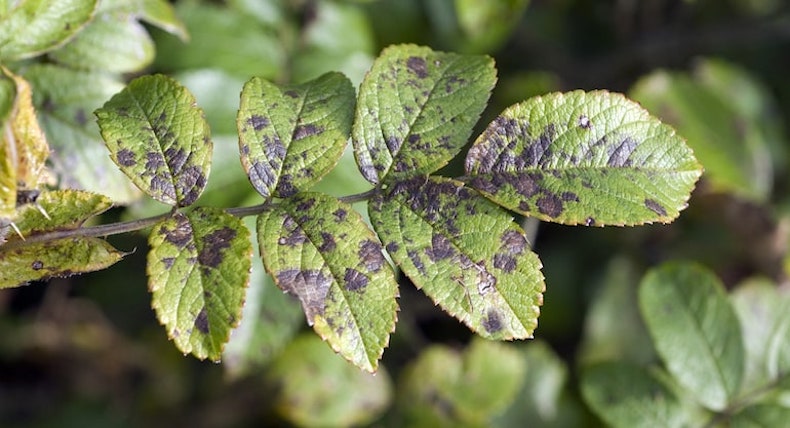
Fungi thrive in moist, damp environments and can cause a variety of problems on plants, including leaf spots, root rot, and wilt.
Causes:
Overwatering: Overwatering can create conditions that favor fungal growth.
Poor drainage: Poorly draining soil can lead to root rot, which can provide a breeding ground for fungi.
Damaged roots: Damaged roots, such as from root-knot nematodes or mechanical damage, can make plants more susceptible to fungal infections.
Prevention:
Water your plants deeply but infrequently to allow the soil to dry out between waterings.
Ensure that your plants have well-draining soil.
Avoid planting in areas with poor drainage.
Protect your plants from root damage by carefully handling them during transplanting and avoid damaging their roots with gardening tools.
Treatment:
Remove and destroy the affected leaves and stems.
Prune any dead or damaged branches.
Apply a fungicide to the affected plant and surrounding plants to prevent the spread of the fungus.
Rust
Rust is a fungal disease that causes orange or yellow spots on leaves. It is typically caused by airborne spores that infect the plant.
Causes:
High humidity: Rust fungi thrive in humid conditions.
Stressed plants: Plants that are stressed due to environmental factors, such as drought or poor soil conditions, are more susceptible to rust infection.
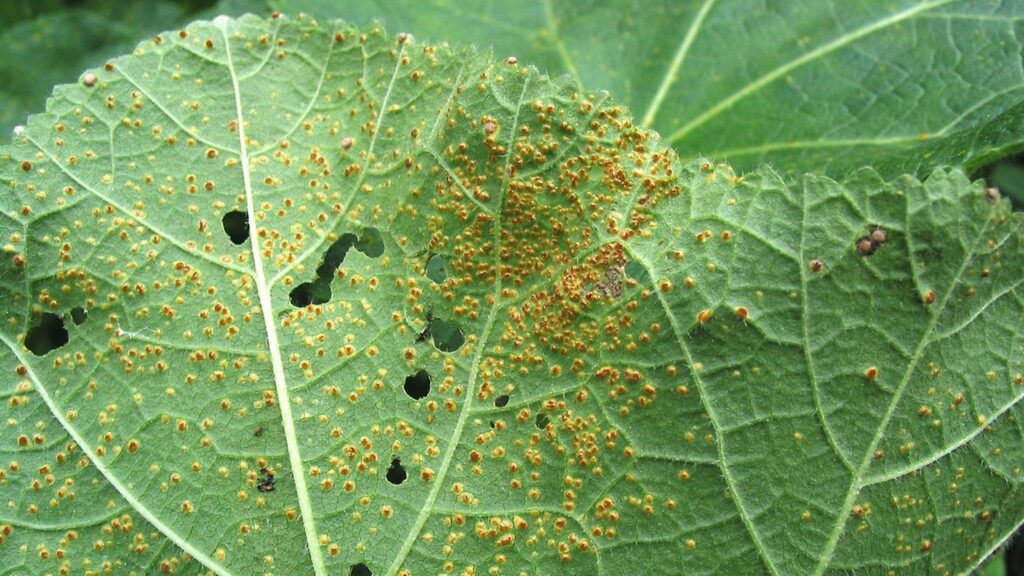
Prevention:
Grow rust-resistant varieties of plants whenever possible.
Avoid overhead watering, which can splash spores onto healthy leaves.
Provide good air circulation around the plants to reduce humidity.
Inspect plants regularly for signs of rust and remove infected leaves promptly.
Treatment:
Remove and destroy infected leaves to prevent the spread of the disease.
Apply a horticultural oil or neem oil to the affected plant to smother the rust spores.
Consider using a fungicide if the rust infection is severe.
Leaf Miner
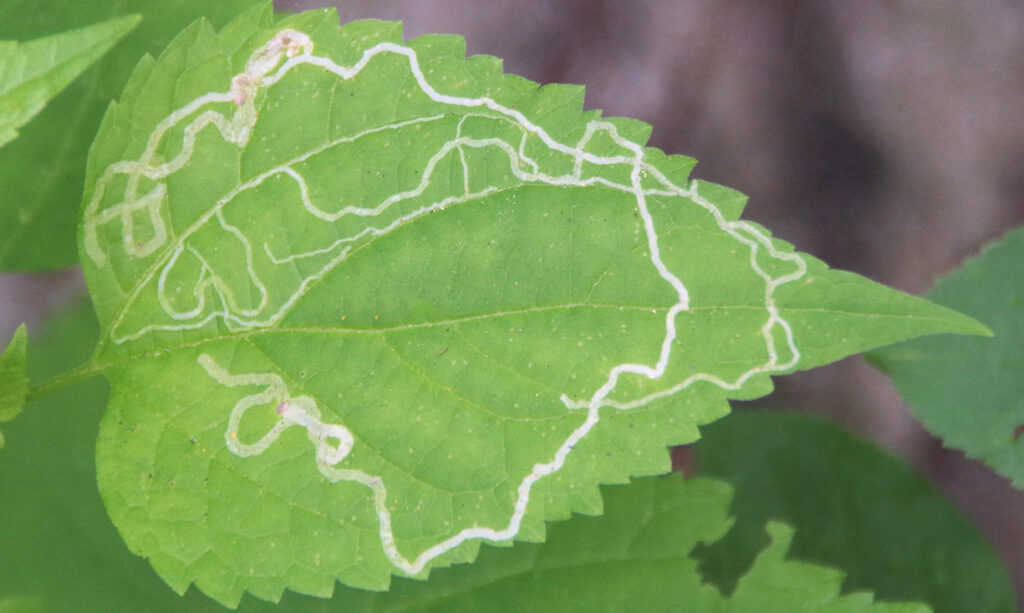
Leaf miners are larvae of small flies or moths that create tunnels or trails within leaves. They feed on the plant’s sap and can cause leaves to turn yellow or brown and drop off.
Causes:
Leaf miner larvae: These larvae are responsible for creating the tunnels and trails in leaves.
Stressed plants: Weak or stressed plants are more attractive to leaf miners.
Prevention:
Inspect plants regularly for signs of leaf miner tunnels or larvae.
Monitor for adult leaf miner flies or moths and remove them if found.
Avoid planting near known hosts of leaf miner pests.
Provide good air circulation around plants to reduce the risk of infestation.
Treatment:
Handpick and destroy any visible leaf miner larvae.
Use insecticidal soap or neem oil to kill leaf miner larvae and prevent further infestation.
Consider using a systemic insecticide
Caterpillar
Caterpillars are the larvae of butterflies and moths. They feed on leaves and flowers, causing damage that can range from minor leaf stippling to complete defoliation. Some caterpillars also produce silk that can web the leaves together and make the plant unsightly.
Causes:
Attraction to new growth: Caterpillars are attracted to the tender new leaves and flowers of plants.
Habitat: Caterpillars thrive in moist, shady conditions.

Prevention:
Inspect plants regularly for signs of caterpillars: Look for holes in leaves, frass (caterpillar droppings), and silk webbing.
Handpick caterpillars: This is the most effective way to control caterpillar populations.
Use insecticidal soap or neem oil: These organic pesticides can kill caterpillars on contact.
Remove weeds: Weeds can provide shelter for caterpillars.
Treatment:
Handpick caterpillars: If you see caterpillars, remove them from the plant and destroy them.
Use insecticidal soap or neem oil: Spray the plant with insecticidal soap or neem oil to kill caterpillars on contact.
Consider using a systemic insecticide: This type of insecticide can be applied to the soil and will be absorbed by the plant’s roots. It will then circulate through the plant and kill caterpillars that feed on it.
Leafcutter Ant
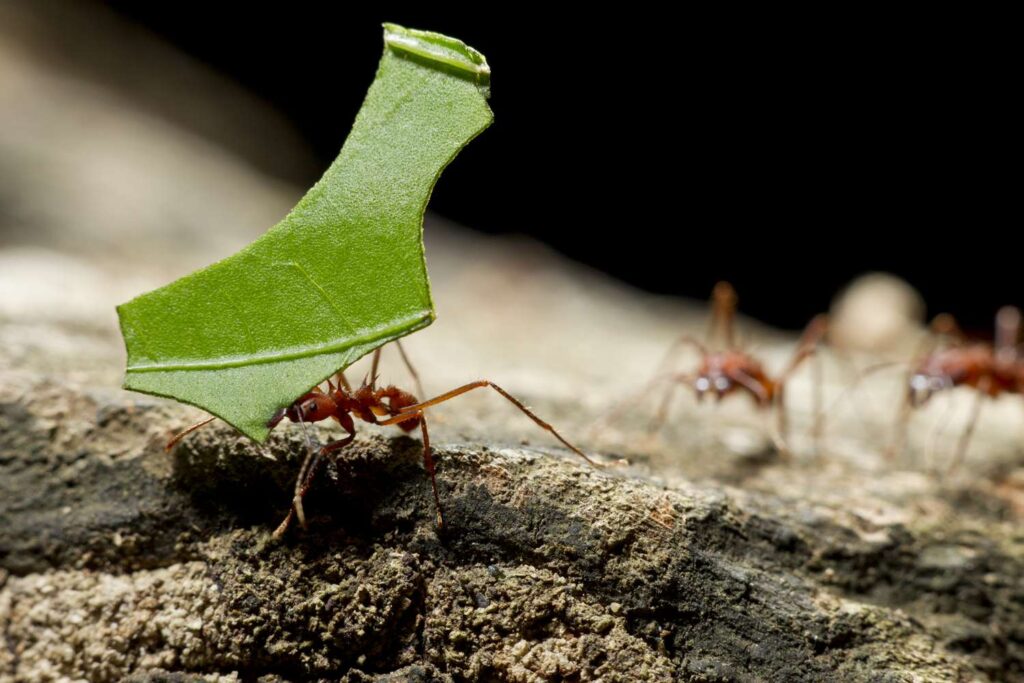
Leafcutter ants are attracted to the sweet sap of tender new leaves. They cut out small pieces of leaves and carry them to their nests, where they use them to grow fungus. The fungus is the main food source for the ants. Over time, leafcutter ant activity can damage plants and make them unsightly.
Causes:
Preference for tender new leaves: Leafcutter ants are attracted to the tender new leaves of plants.
Abundance of food: Leafcutter ants are more likely to attack plants that have an abundance of new growth.
Prevention:
Protect plants with barriers: You can use physical barriers such as cardboard or metal collars to protect plants from leafcutter ants.
Use baits: There are commercial baits that can be used to control leafcutter ants. The baits contain an insecticide that kills the ants when they consume it.
Remove food sources: If you can, remove any other food sources for leafcutter ants in your garden, such as decaying fruit or vegetables.
Treatment:
Remove leafcutter ants: If you see leafcutter ants, you can try to remove them by hand. Be careful not to squish them, as this will release pheromones that will attract more ants.
Use baits: Commercial baits can be effective for controlling leafcutter ant populations.
Use insecticides: In severe cases, you may need to use insecticides to control leafcutter ants.
Slugs, Snails, and Beetles
Slugs and snails are mollusks that feed on plant leaves and flowers. Beetles chew holes in leaves. Slugs and snails are most active at night, while beetles are active during the day.
Causes:
Moisture: Slugs and snails prefer moist environments.
Food: Slugs and snails are attracted to plants that are young and tender.
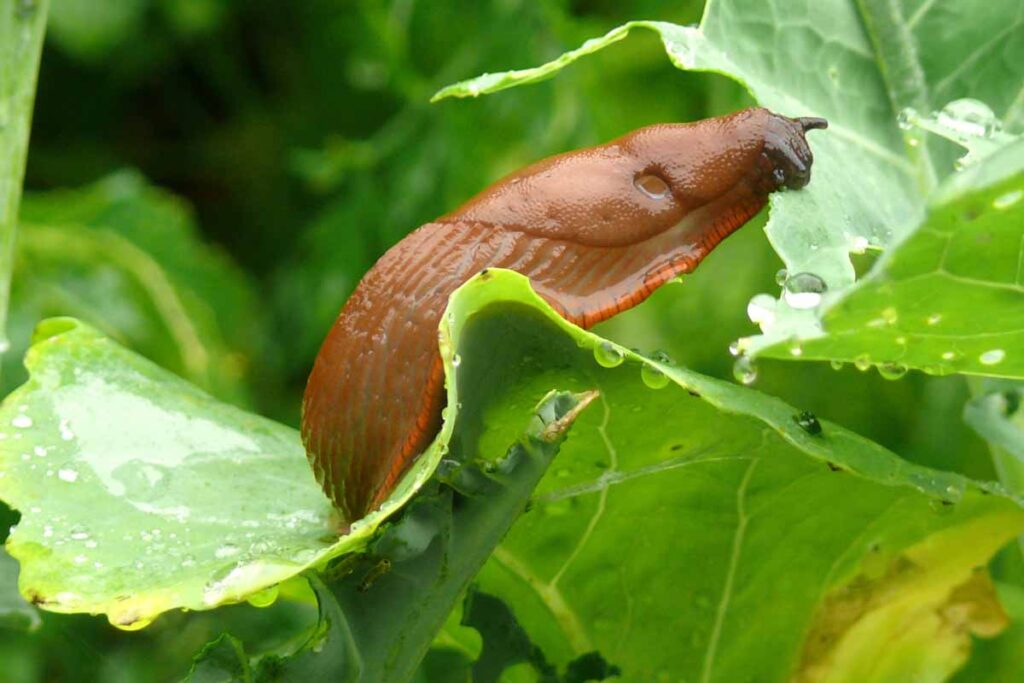
Prevention:
Reduce moisture: You can reduce the moisture around your plants by watering in the morning so that the leaves have time to dry before nightfall. You can also create a barrier around your plants using diatomaceous earth.
Encourage natural predators: There are a number of natural predators of slugs and snails, such as toads, snakes, and birds. You can encourage these predators to visit your garden by providing them with food and shelter.
Use slug and snail baits: There are commercial slug and snail baits that can be used to control slug and snail populations.
Treatment:
Handpick slugs and snails: This is the most effective way to control slug and snail populations. You can place slug and snail baits in areas where you have seen slug and snail activity.
Use slug and snail traps: You can use slug and snail traps to capture and kill slugs and snails.
Use copper tape: Copper tape can be used to create a barrier around your plants. Slugs and snails will not cross the tape because they are repelled by the copper.
Aphids
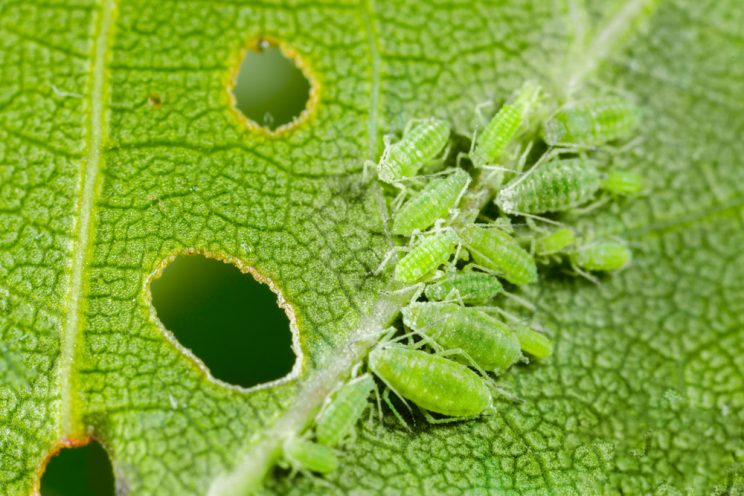
Slugs and snails are mollusks that feed on plant leaves and flowers. Beetles chew holes in leaves. Slugs and snails are most active at night, while beetles are active during the day.
Causes:
Moisture: Slugs and snails prefer moist environments.
Food: Slugs and snails are attracted to plants that are young and tender.
Prevention:
Monitor your plants regularly for signs of aphid infestation.
Remove aphid-infested leaves and stems.
Use insecticidal soap or neem oil to kill aphids on contact.
Introduce natural predators such as ladybugs and lacewings.
Avoid overwatering your plants, as this can create a favorable environment for aphids.
Treatment:
If you have a small infestation, you can try to handpick the aphids off the plants.
Use an insecticide labeled for use against aphids.
In severe cases, you may need to use a systemic insecticide that is absorbed by the plant’s roots and circulates throughout the plant.
Scales
Scales are sap-sucking insects that attach themselves to the leaves, stems, and fruits of plants. They can cause damage to the plant by sucking sap and releasing honeydew, which can attract ants and other pests.
Causes
Scales can be spread by touching infected plants or by insects.
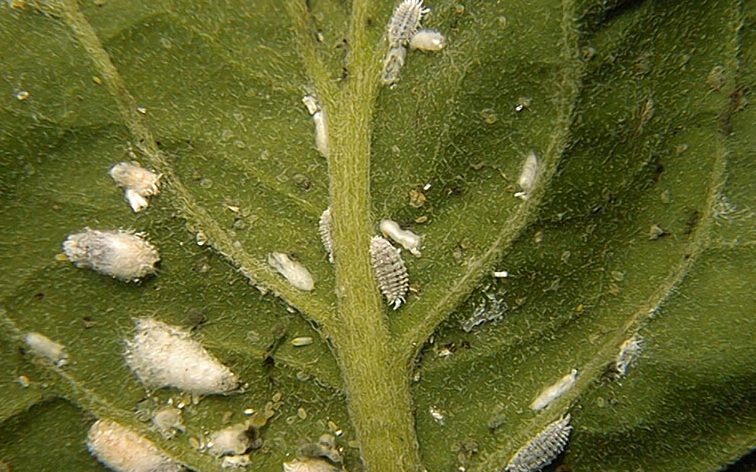
Prevention:
Inspect your plants regularly for signs of scale infestation.
Remove scale-infested plants or parts of plants.
Use insecticidal soap or neem oil to kill scales on contact.
Introduce natural predators such as lady beetles and lacewings.
Monitor your plants for signs of stress that can make them more susceptible to scale infestation.
Treatment:
If you have a small infestation, you can try to handpick the scales off the plants.
Use an insecticide labeled for use against scales.
In severe cases, you may need to use a systemic insecticide that is absorbed by the plant’s roots and circulates throughout the plant.
Comma and Nailhead Scales

Comma and nailhead scales are two types of armored scales that can infest a wide variety of plants. They are similar in appearance, but comma scales are slightly larger and have a more elongated body shape.
Causes
Comma and nailhead scales can be spread by touching infected plants or by insects.
Prevention:
Inspect your plants regularly for signs of comma and nailhead scale infestation.
Remove scale-infested plants or parts of plants.
Use insecticidal soap or neem oil to kill scales on contact.
Introduce natural predators such as lady beetles and lacewings.
Monitor your plants for signs of stress that can make them more susceptible to comma and nailhead scale infestation.
Treatment:
If you have a small infestation, you can try to handpick the scales off the plants.
Use an insecticide labeled for use against comma and nailhead scale.
In severe cases, you may need to use a systemic insecticide that is absorbed by the plant’s roots and circulates throughout the plant.
Mites
Mites are tiny arachnids that can cause damage to a wide variety of plants. They feed on sap from leaves, stems, and buds, which can lead to yellowing, stippling, and premature leaf drop.
Causes:
Dry, hot conditions
Overwatering
Stressed or weak plants
Mites can be spread by wind, insects, and contaminated tools and equipment.
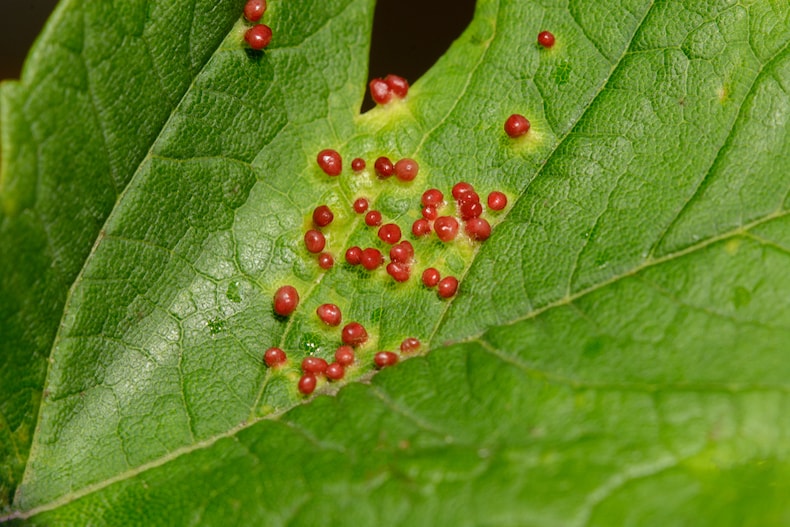
Prevention:
Maintain humidity levels around your plants.
Increase air circulation around your plants.
Use insecticidal soap or neem oil to kill mites on contact.
Introduce natural predators such as ladybugs, lacewings, and predatory mites.
Avoid overwatering your plants, as this can create a favorable environment for mites.
Treatment:
If you have a small infestation, you can try to wash the mites off the plants with a mild soapy solution.
Use an insecticide labeled for use against mites.
In severe cases, you may need to use a systemic insecticide that is absorbed by the plant’s roots and circulates throughout the plant.
Mealybugs
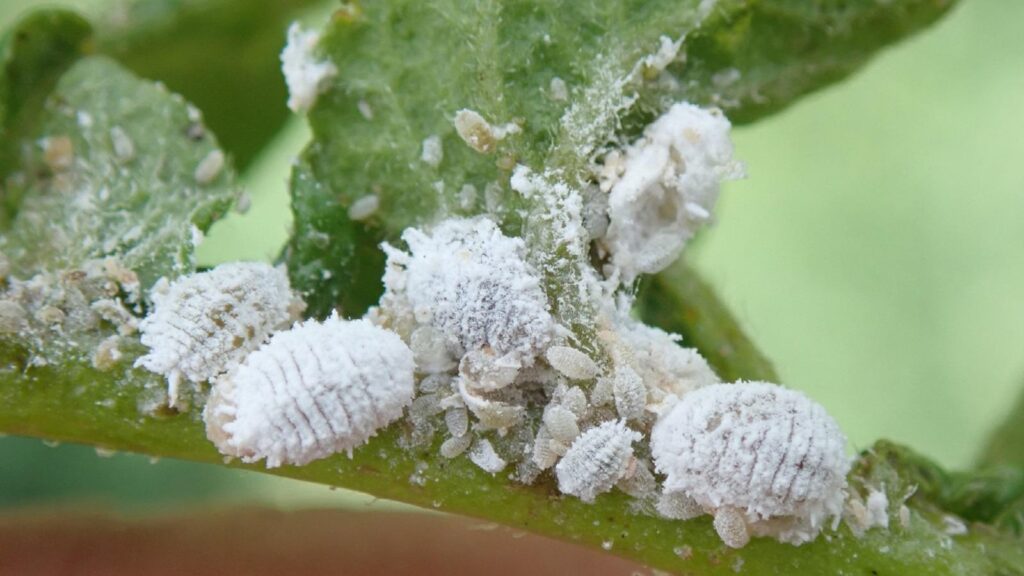
Mealybugs are sap-sucking insects that attach themselves to the leaves, stems, and fruits of plants. They can cause damage to the plant by sucking sap and releasing honeydew, which can attract ants and other pests.
Causes:
Overcrowded plants
Stressed or weak plants
Mealybugs can be spread by wind, insects, and contaminated tools and equipment.
Prevention:
Avoid overcrowding your plants.
Inspect your plants regularly for signs of mealybugs infestation.
Use insecticidal soap or neem oil to kill mealybugs on contact.
Introduce natural predators such as ladybugs, lacewings, and parasitic wasps.
Monitor your plants for signs of stress that can make them more susceptible to mealybugs infestation.
Treatment:
If you have a small infestation, you can try to handpick the mealybugs off the plants.
Use an insecticide labeled for use against mealybugs.
In severe cases, you may need to use a systemic insecticide that is absorbed by the plant’s roots and circulates throughout the plant.
